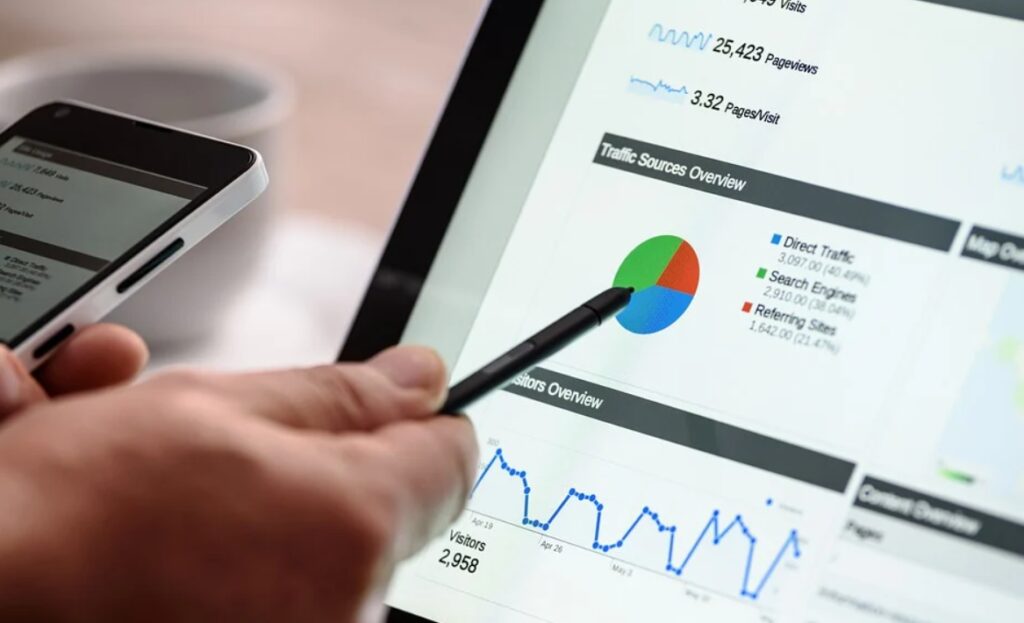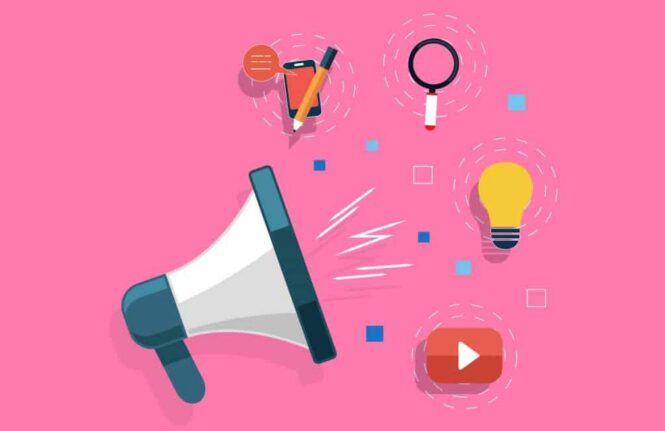2024 is almost here. If you are like most people, a new year brings inspiration for better things. A better life, better business ideas, growth, and higher revenues.
While we can’t say that we’ve crushed the Covid-19 pandemic, a recent report by McKinsey & Company shows that businesses are experiencing rapid growth and demand remains strong. This is happening in the face of pandemic-related disruptions.
As businesses look forward to a less chaotic 2024, we can expect competition to remain stiff in all sectors.
Everyone wants a piece of the pie, which means capturing and retaining a solid market share will require feasible digital marketing strategies.
We are not talking about trends that are here today but unusable tomorrow. No, we mean proven techniques that deliver awareness and growth.
Techniques such as the ones we will talk about below:
Data-Driven Marketing

Data marketing is the future of B2B digital marketing. It’s likely that your business already has so much data on hand. What if you harnessed and analyzed that information to gain insight into customer behavior?
You’ll be able to determine your ideal audience, content that draws them in and the best channels to reach them on. You can use this data to build customer profiles and pinpoint the businesses you should target.
Have you ever felt like you’re shooting arrows in the dark? You’ve got a long email list, but hardly any of your audiences respond to your marketing messages?
Data analysis may help identify buyer preferences and interests allowing you to create highly targeted and relatable messages.
Additionally, data can help eliminate time wastage by scoring your leads. This will improve the quality of leads reaching your team, ensuring they focus on the most promising ones.
By benchmarking against historic data, you’ll be able to test the effectiveness of your marketing campaigns and improve the sales process. You can then allocate your budget where it generates the most returns.
So rather than rely on intuition, preferences, and expectations, to run your business, you’ll be making decisions based on what your data is saying.
Examples of data analysis tools you can consider include Contentsquare, GoodData, Exponea, Tableau, Sisense, Qlik, Looker, Oktopost, and Shield.
Social Proof

Close to 94 percent of buyers rely on customer reviews when dealing with a new vendor. Research also shows that a further 66 percent of shoppers are likely to buy products because of their positive reviews.
What does this tell you?
First, buyers place more weight on what peers think about your solutions over anything you say. They want to know the experience others have had with your brand and services and if these solutions live up to expectations.
Second, if you don’t have any social proof, you’re likely to miss out on a huge chunk of sales, regardless of how awesome your products/services are.
What social proof can you incorporate into your strategy?
User ratings. Customers evaluate your services using a star scale. The more stars you receive the more commendable your solutions are.
User reviews: Some users leave short and concise statements while others provide detailed user experiences. What matters is how many positive reviews you receive.
Address negative reviews fast to ensure they don’t affect a prospective buyer’s perception.
Add testimonials to long-form content. People remember stories more than they do facts, so be sure to infuse your content (blogs, white papers, drip email campaigns) with case studies and testimonials.
Maximize affiliations. Make a list of business affiliations, particularly those that are beneficial to leverage and showcase them on your website. It will increase your credibility in the eyes of prospects that know and trust those brands.
Influencer Marketing

From industry analysts to opinion leaders, journalists, and customers, B2B influencers are changing the way we do business.
These influencers are people who have built stellar reputations and their followers look to them for guidance when making purchases.
Working with an influencer potentially increases awareness and nurtures an interest in your brand and solutions, and increases a prospect’s propensity to buy.
Here are some practices to consider:
• It takes time to find a suitable influencer. Create an influencer dossier to compare different influencers and their levels of influence. The dossier can include the number of social platforms, non-social influence platforms such as podcasts or speaking, topics covered, well-performing posts, engagement ratios, and geography.
• Have realistic timelines. Even with influencers in the picture, B2B sales cycles take longer to complete, especially if there are multiple decision-makers. The influencer’s impact may take some time to touch all these people.
• Before looking outside your ecosystem for an influencer, evaluate existing advocates who already have pre-baked knowledge of your solutions. These advocates can be existing customers, employees, or business partners.
• Consider influencers your customers are already engaged with. It will be easier for potential customers to resonate and accept what the influencer says about you.
• Educate your influencer. Tell them about your history, culture, solutions, customers, and competitors. The more the influencer knows, the more authentic their story will sound.
Cold Calling

Is cold calling to set up sales meetings, as done by saleshive.com, still going to work in 2024 and beyond?
The only way it will stop is if buyers stop answering phone calls from new providers.
Research shows that up to 69 percent of B2B buyers have accepted calls from new vendors in the past 12 months.
Clearly, cold calling is still in business. And it’s a great way to maximize awareness and generate revenue.
So go on and make those calls. But before you dial any numbers, consider the following:
Identify your target market. In order for you to resonate with prospective buyers, you’ll need to identify businesses that can benefit from your solutions.
Research the company. Visit their website, social platforms, or print media to determine their size, location, and recent activities that may impact the call. they face and your ability to provide tangible solutions.
Come up with your objectives. What do you want to achieve from the call? A sales meeting? Perhaps signing them up for a trial? Let this objective guide the call.
Avoid the over-salesy approach on your first call. People want to feel in control when dealing with vendors and don’t like being pressured to buy.
Be a student. Use the call to learn as much as you can about the prospect’s needs. It will help you assess how your solutions tie in or find a loophole in their existing solutions you can leverage.
Build up your resilience. It takes stamina and determination to get past objections and downright “nos.” It’s not personal. Take it in your stride and keep on calling.
Chatbot Marketing

Chatbots are quite popular and their usefulness is likely to increase as tech giants explore AI further.
Chatbots deliver prompt responses to questions, guide potential buyers through purchases, and ensure your visitors have a smooth experience.
They also collect visitor information and can offer insights into buyer behavior, interests, and preferences.
Well-developed chatbots may help close sales by establishing personalized interactions with prospective customers based on previous purchase history and preferences.
Here’s how you can build an effective chatbot strategy:
• Define your users. Who are your users? How can you help them? A clear idea of your target audience will help determine the scope of your chatbot strategy.
• Come up with measurable goals that you would like your chatbot strategy to achieve. Think about the value your chatbot will add to your prospects and customers and how it will facilitate conversions.
• Place your chatbot in strategic places such as high-traffic pages and high-intent pages (service or price pages, etc).
• Create chat flows that revolve around pre-planned conversations based on a range of consumer responses. While you’re at it, program the chatbot to forward complicated queries to a human agent.
• Now it’s time to create your bot. There are several chat-building tools you can consider, including ManyChat, Pandorabots, Tidio, Chatfuel, SendPulse, and MobileMonkey.
• Whichever tool you use, ensure that it can deliver the goals you came up with above.
• Test your bot before it goes live. Is the bot answering all questions asked? What tone does it use? Can it recognize leads who are ready to convert? How does it handle unqualified leads?
• Monitor the bot after going live to ensure it’s working as intended.
 Imagup General Magazine 2024
Imagup General Magazine 2024



